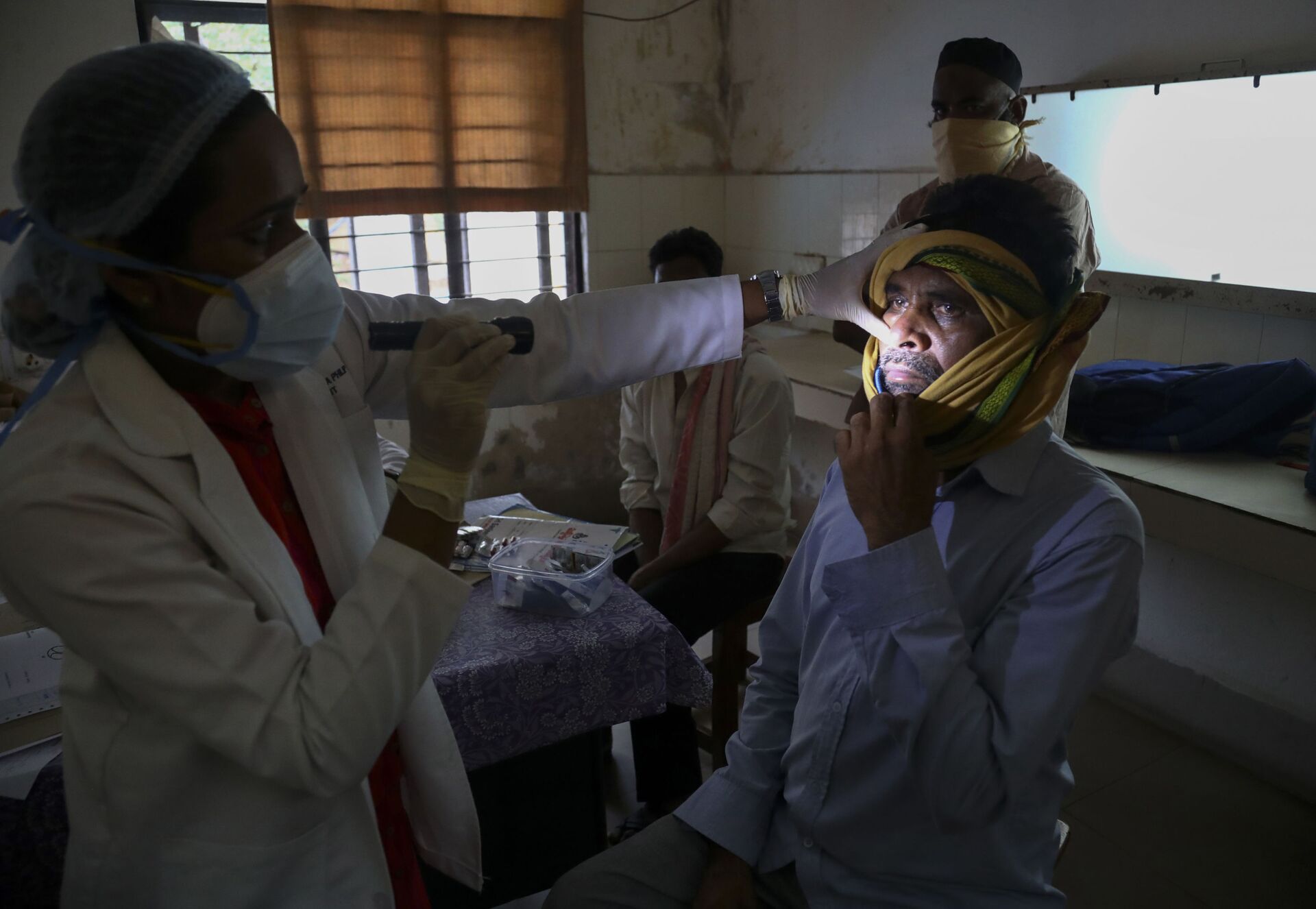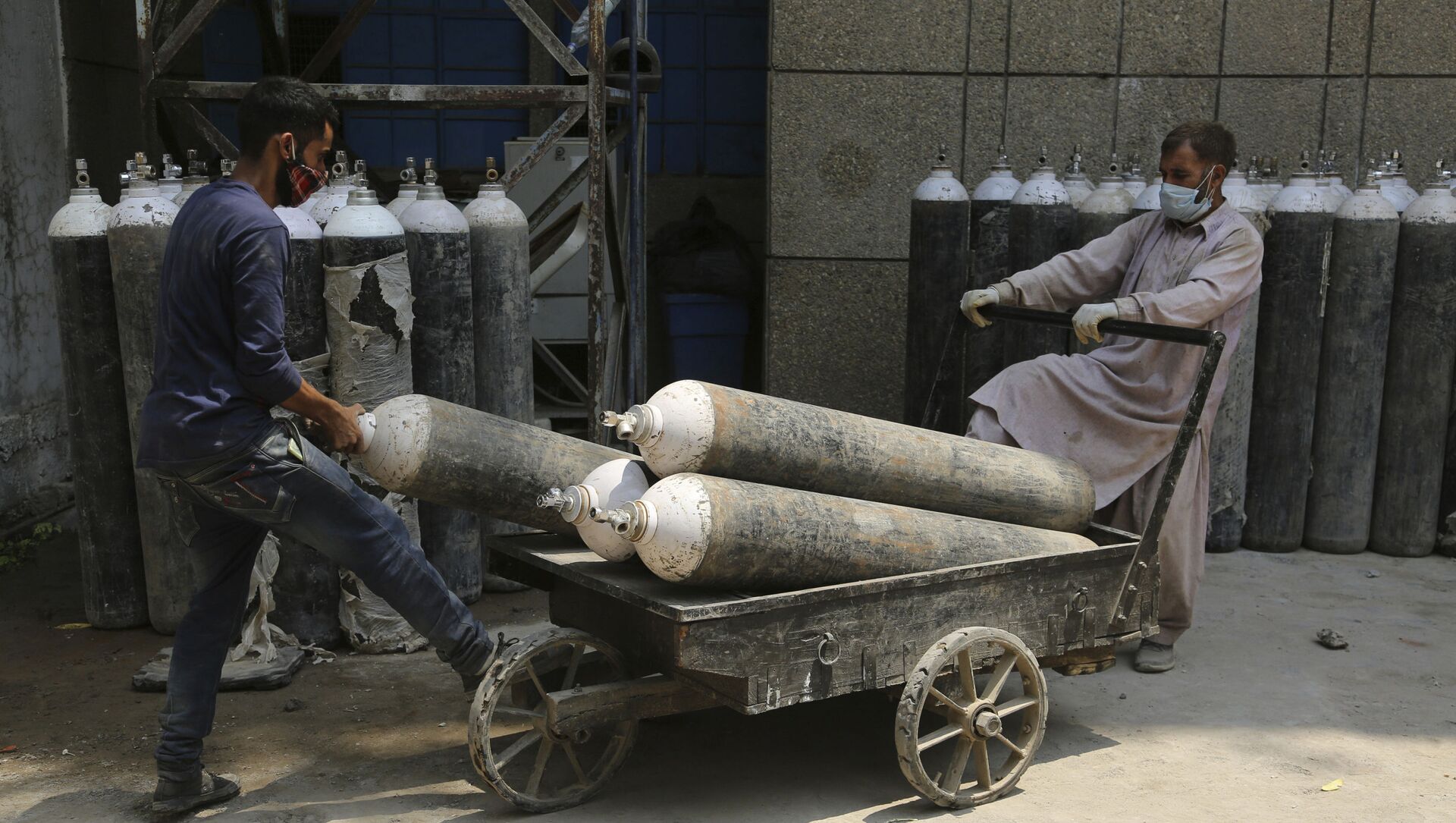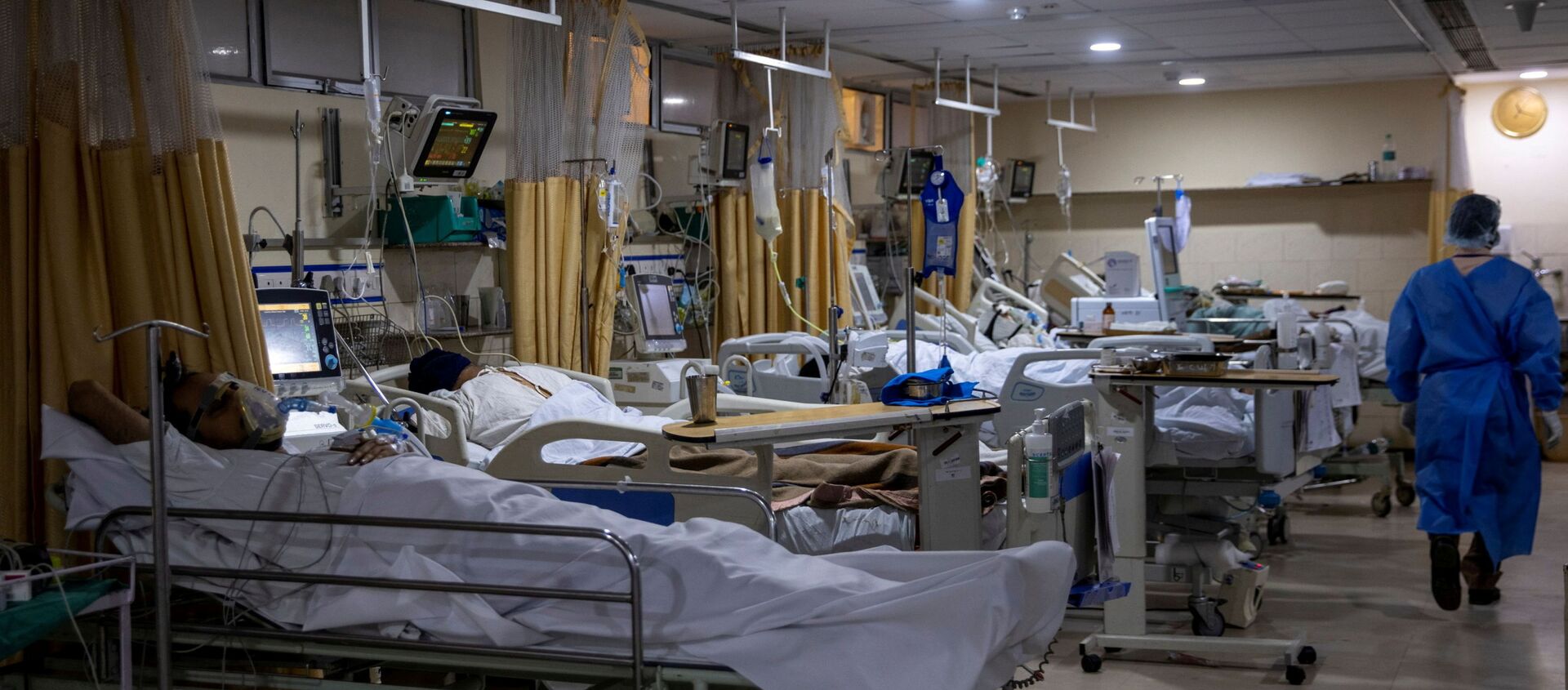Low-quality cylinders or low-quality piping systems in intensive car units (ICUs) – and contaminated industrial oxygen supplies – in Indian hospitals may be fuelling the surge in black fungus cases across the country, experts says.
"Industrial Oxygen has much higher purity than medical oxygen but there have indeed been negative impacts of using industrial oxygen for medical purposes. At the time of deficit, the government just took the industrial oxygen anywhere in the country and those oxygen were not in a good condition. Every industrial oxygen has to be cleaned and the moisture has to be extracted from the cylinder to be used for medical purposes," Divya Chawla, director at Oxygize, told Sputnik.
"To meet the rise in demand, industrial oxygen is being procured in large quantity and questions have been asked about whether the oxygen supplied from industries matches is the quality of medical oxygen or not. This could also be one of the reasons for rise in Black fungus cases," Dr. Sampath Chandra Prasad Rao from Manipal Hospital (Bengaluru) said during a meeting on the crisis.
Meanwhile, Karnataka's Deputy State Chief and state COVID Task Force Head Dr. CN Ashwath Narayan has ordered the Treatment Protocol Committee to investigate if the rise in the black fungus cases is linked to the use of industrial oxygen.
The minister also said that black fungus cases have not been reported in other pandemic hit countries, and the states of Gujarat and Maharashtra have reported more than half of the total cases in India,
Mucormycosis, colloquially known as black fungus, is an infection from the mucormycetes group of fungi. It is abundantly found in natural environments, especially in soil. Currently, patients in India who are infected with, or have recovered from, COVID are contracting the fungal infection at an alarming rate.

India has reported over cases of 8,800 black fungus and it's spreading rapidly. Aside from Gujarat and Maharashtra, at least 15 other states have reported between eight and 900 cases. The disease has a mortality rate of over 50 percent and affects the sinuses, brain, and lungs, and is particularly dangerous for diabetic or severely immuno-compromised individuals, such as cancer patients or people with HIV/Aids.






